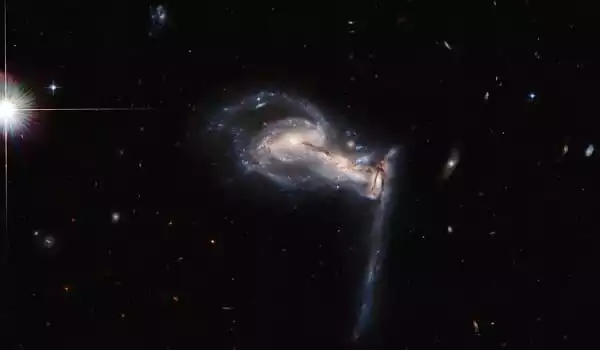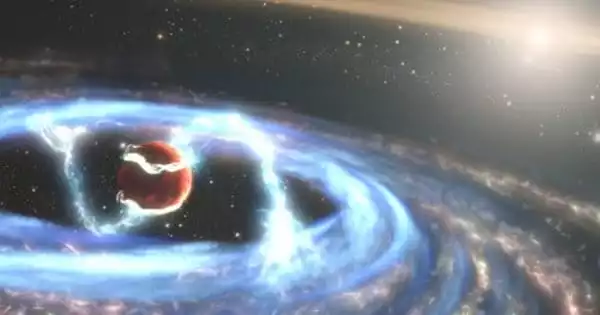NASA revealed that its Hubble Space Telescope has found visual proof that some “gas giant” plants, like as Jupiter, grow in a manner that contradicts the prevalent theory. According to a new study, the Hubble Space Telescope has discovered a young Jupiter-like protoplanet that supports an unconventional planetary formation theory.
The planet AB Aurigae b, located 531 light-years from our solar and estimated to be roughly 2 million years old, is the subject of the photograph. Scientists believe that gaseous and rocky planets arise from material gathered around a star in a region known as a circumstellar disk.
However, due to its size and position, AB Aurigae b appears to be defying long-held assumptions about the mechanics of planetary formation. Indeed, the researchers who discovered this exoplanet believe it supports an unconventional planetary formation theory called as “disk instability,” which has been described as “intense and violent.”
According to a report published in the journal Nature Astronomy, the planet AB Aurigae b, which is potentially nine times more massive than Jupiter, is developing in a “intense and violent process” so far away from its sun that core accretion is unlikely to account for its origin.
We couldn’t detect this motion for at least a year or two. Hubble provided a time baseline, combined with Subaru data, of 13 years, which was sufficient to be able to detect orbital motion.
Thayne Currie
The most widely recognized planetary formation theory for jovian planets is core accretion, which is “a bottom-up method in which planets contained in the disk develop from microscopic particles ranging in size from dust grains to boulders impacting and cementing together as they orbit a star This core then gradually absorbs gas from the disk “according to a press release explaining the new study
AB Aurigae b, on the other hand, orbits its star at a distance of 8.6 billion miles, which is more than double the distance Pluto is from our solar. Given the distance, astronomers anticipate that a planet like AB Aurigae b will take an incredibly lengthy period to form. But the protoplanet is already nine times more massive than Jupiter is, and at a very young age. Scientists believe that this is only possible through a different method called the “disk instability” approach.
According to the same statement, this technique is “a top-down model in which as a huge disk orbiting a star cools, gravity causes the disk to swiftly break up into one or more planet-mass fragments.”
Researchers matched data from Hubble’s image of AB Aurigae b with data from the ground-based planet imaging equipment SCExAO on Japan’s Subaru Telescope in Hawaii to conclude that this exoplanet evolved via this alternative approach.

According to the statement, “the amount of data from space and ground-based observatories proved important because discriminating between young planets and complicated disk features unrelated to planets is quite challenging.”
The study’s data was generated from two Hubble instruments — the Space Telescope Imaging Spectrograph and the Near Infrared Camera and Multi-Object Spectrograph — and compared with data from Japan’s 8.2-meter Subaru Telescope at Mauna Kea’s summit in Hawaii. According to Thayne Currie of Subaru Telescope and Eureka Scientific, the study’s primary researcher, it confirms notions that there are multiple ways to generate a Jovian planet.
In reality, the study employed Hubble archival data as well as new photos from Hubble. Lead researcher Thayne Currie of the Subaru Telescope and Eureka Scientific stated that Hubble archival data was critical to the conclusions. “We couldn’t detect this motion for at least a year or two,” he claimed. “Hubble provided a time baseline, combined with Subaru data, of 13 years, which was sufficient to be able to detect orbital motion.”
With so much data from the two devices, scientists were able to corroborate their core accretion theory, however additional observations will most likely be performed using the James Webb Space Telescope once it is operational later this year.
The discovery suggests that the violent, “top-down” process of disk instability, as opposed to the gradual, “bottom-up” approach of core accretion, may be more common in the formation of gas-giant planets than previously thought.
Planets contained in the protoplanetary disk progressively form when particles ranging in size from dust grains to boulders impact and bind together as they circle a star through core accretion. However, in the case of disk instability, gravity causes the enormous disk to quickly split up into one or more planet-mass fragments.





